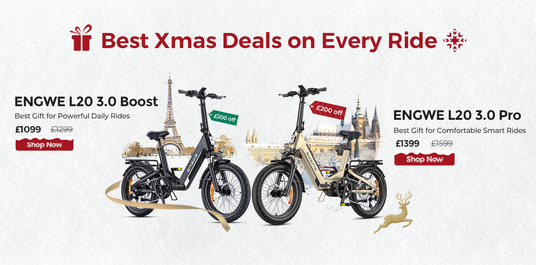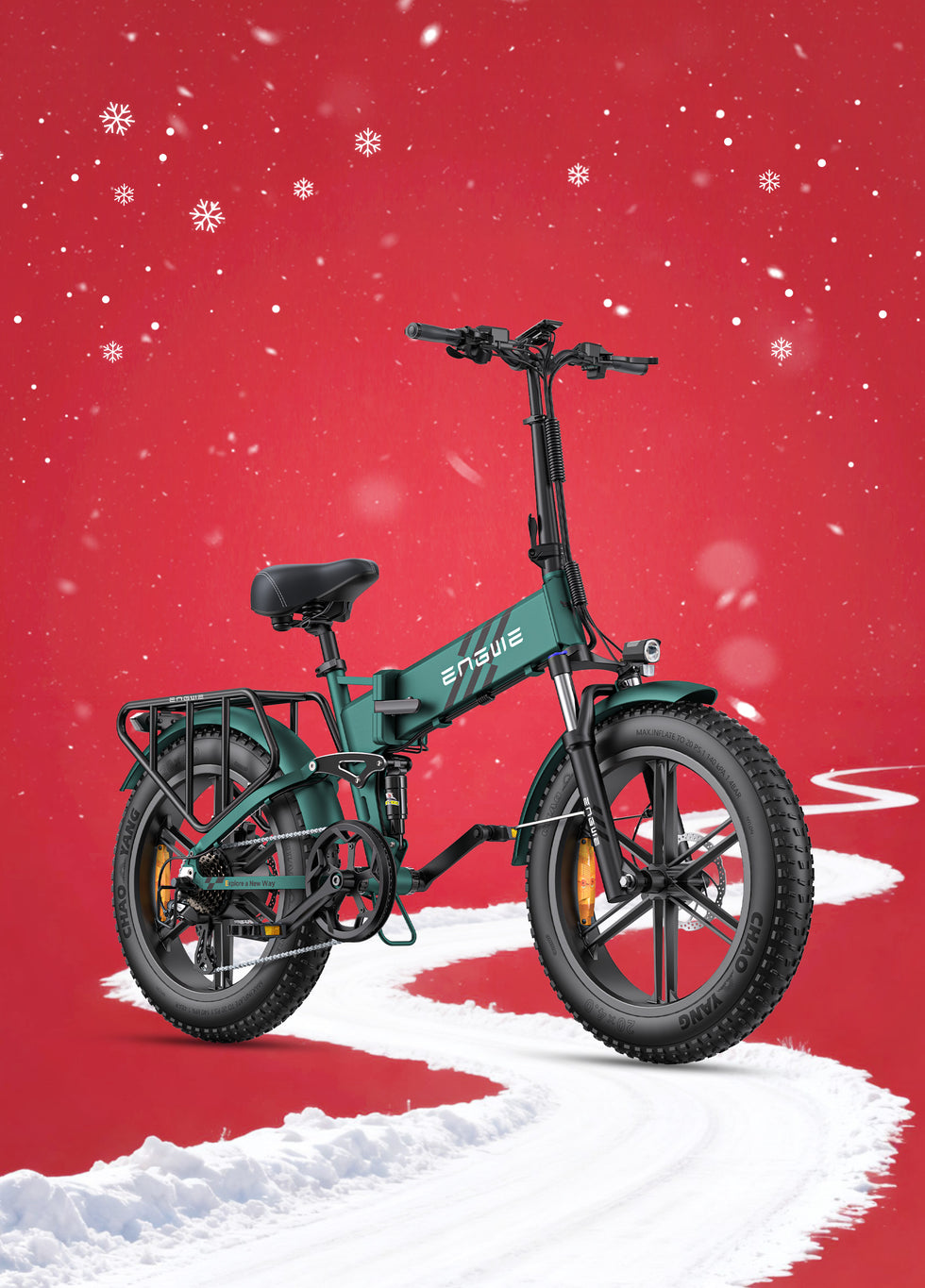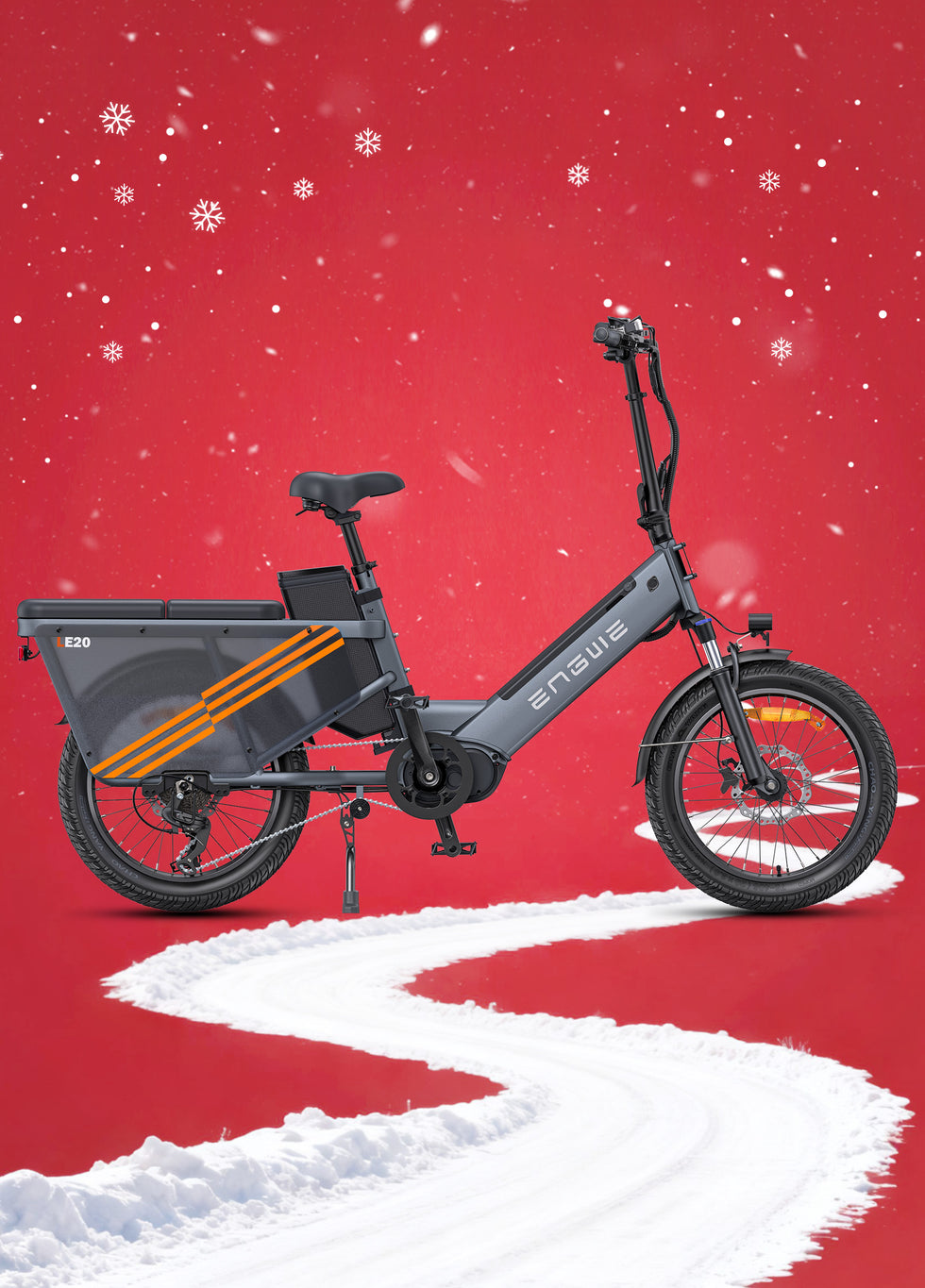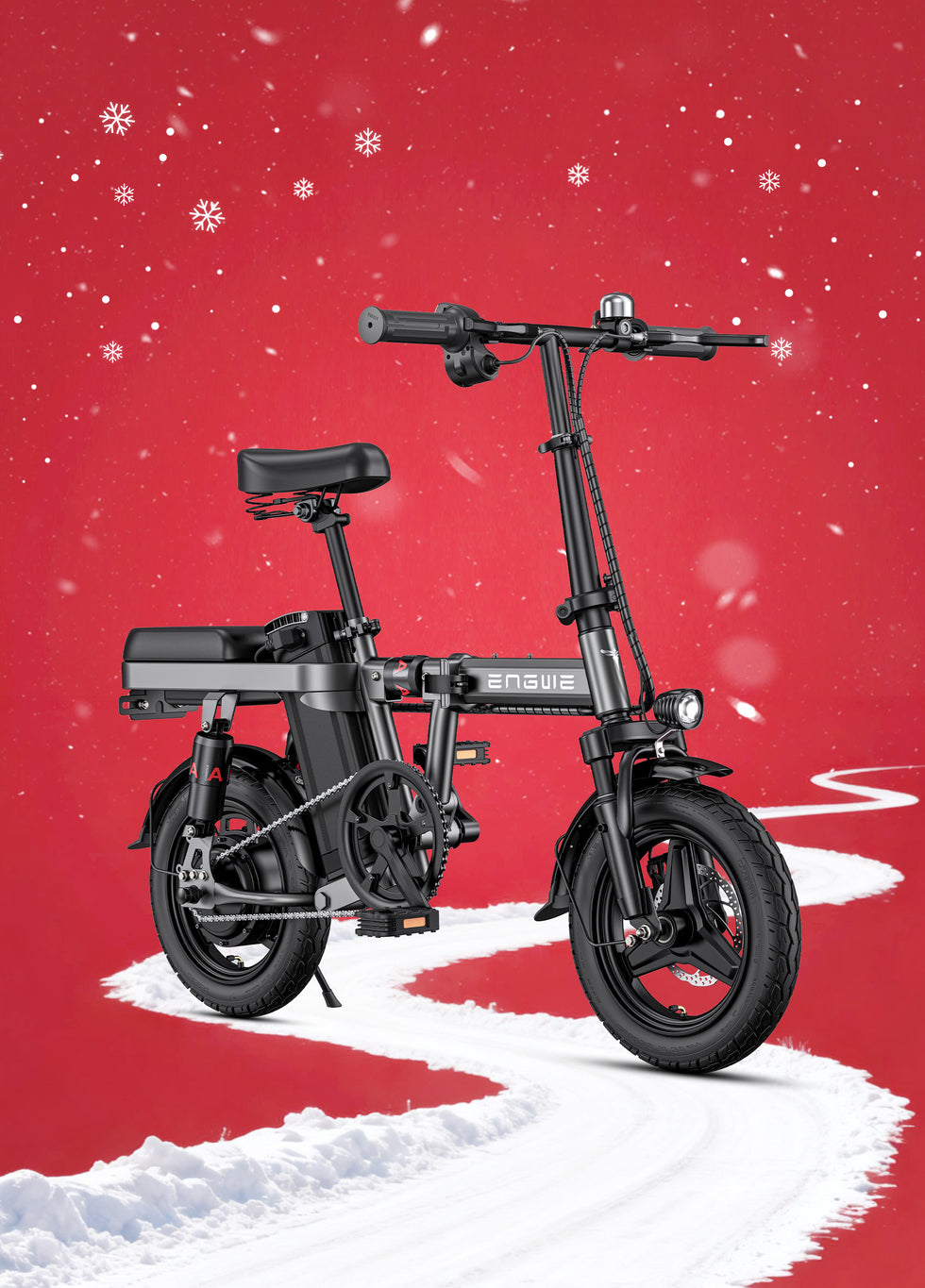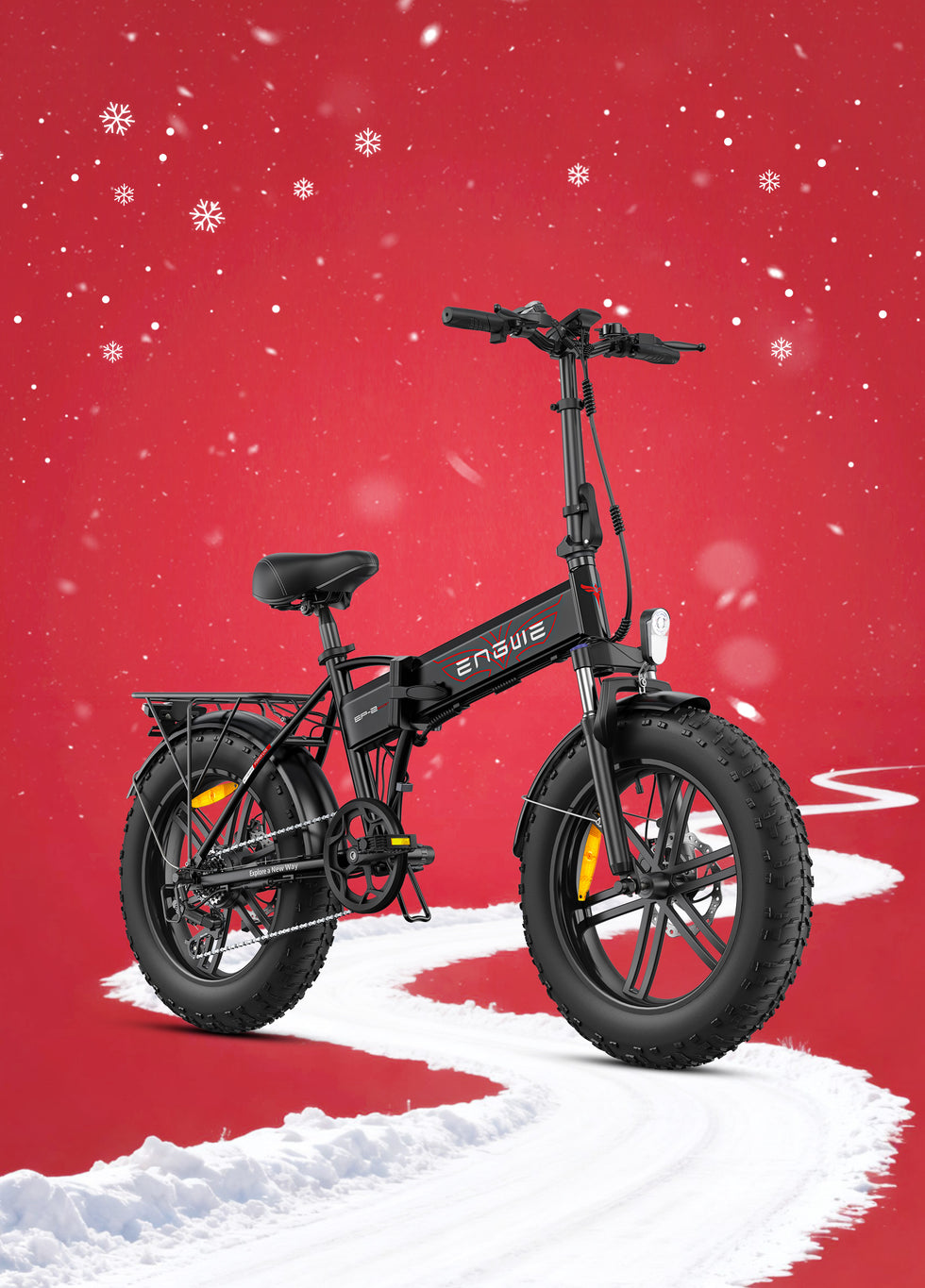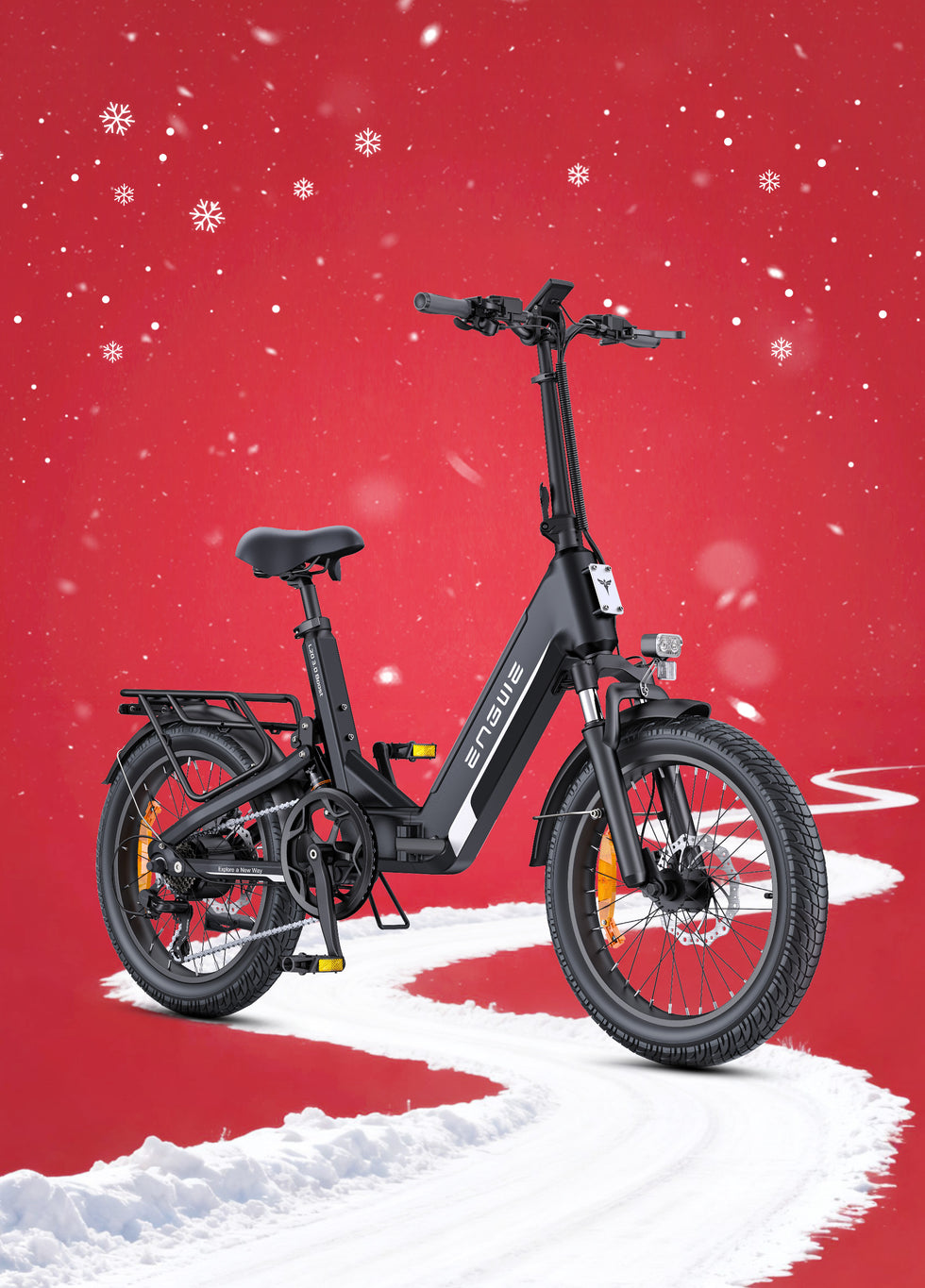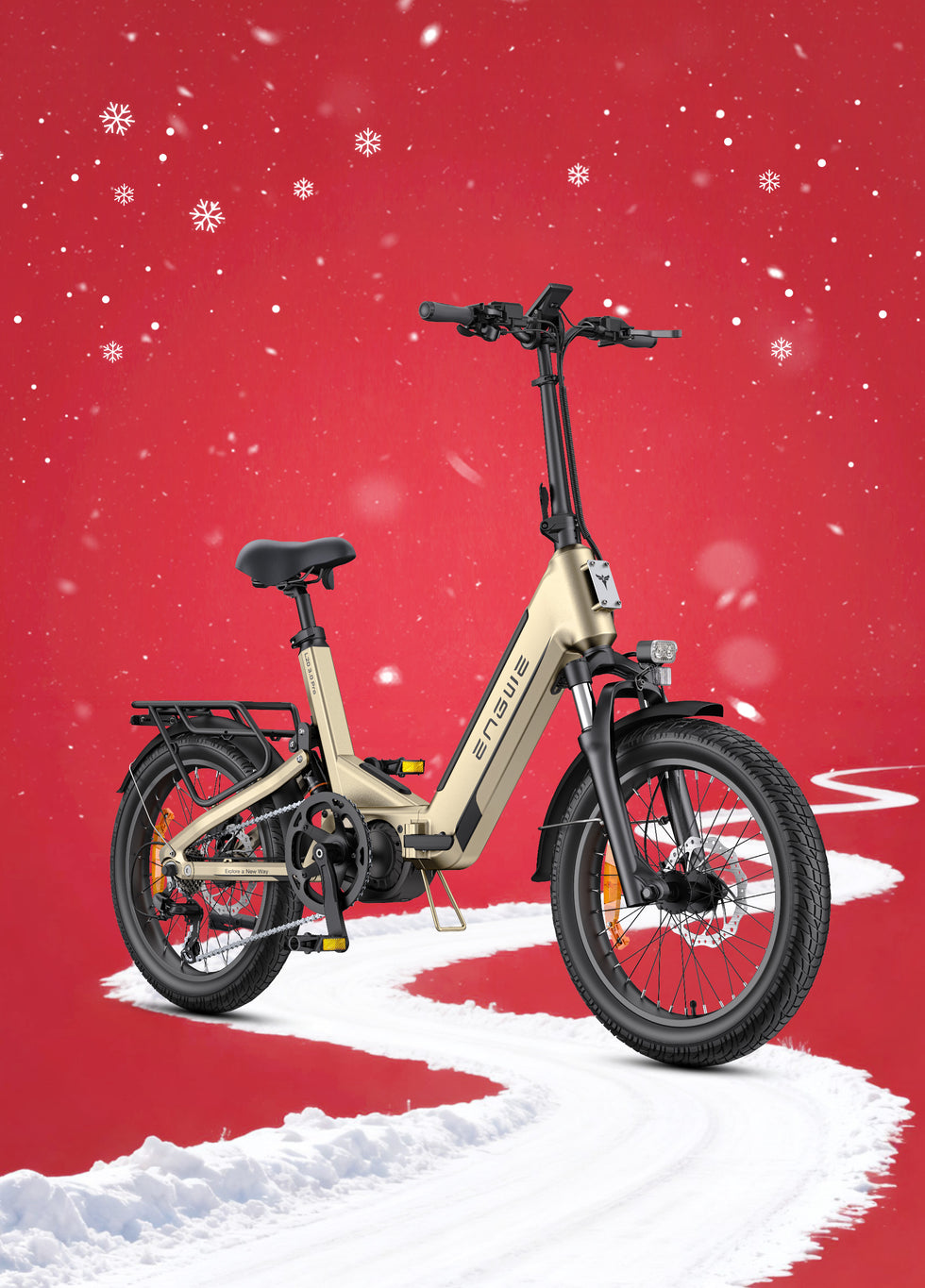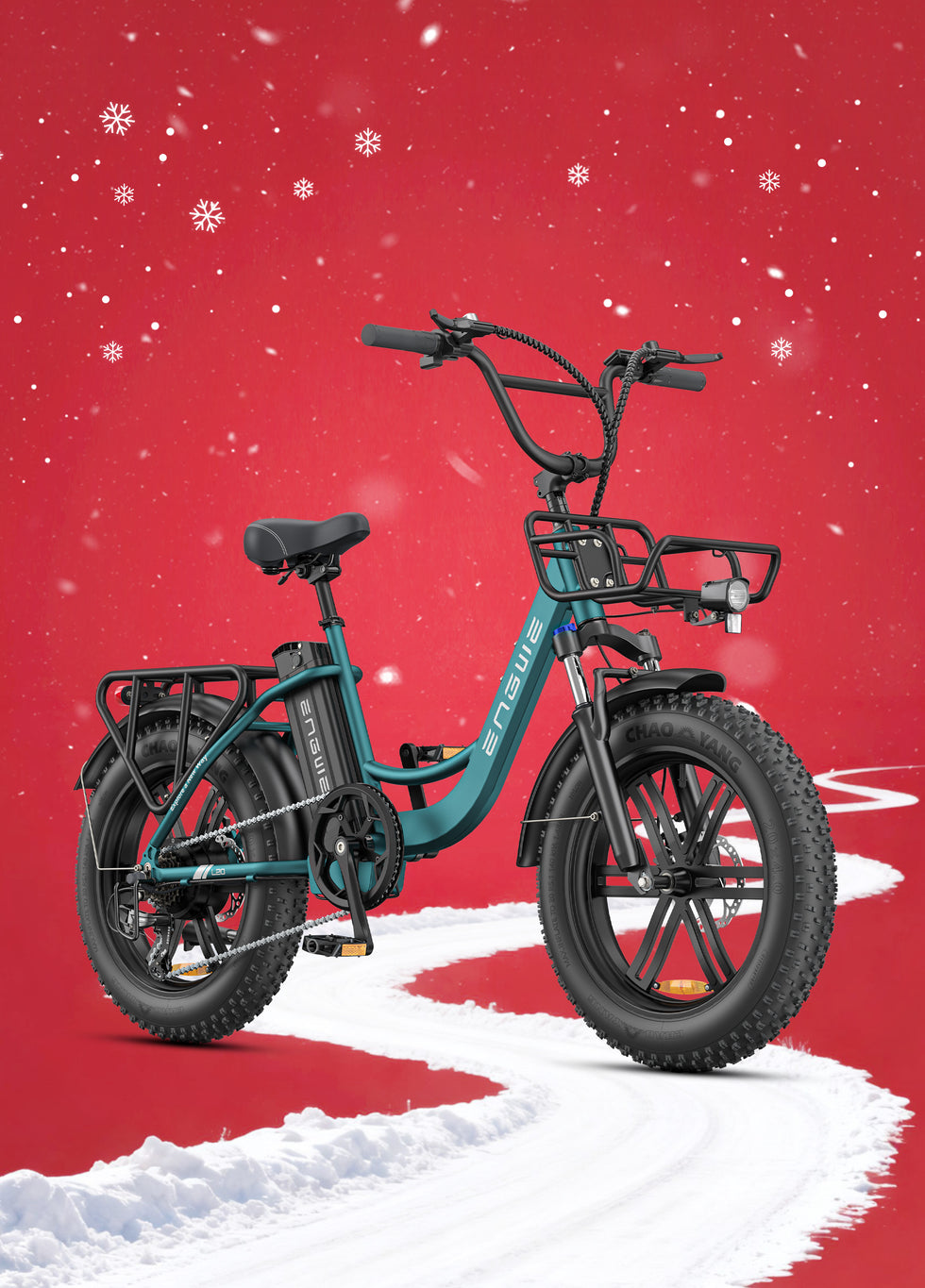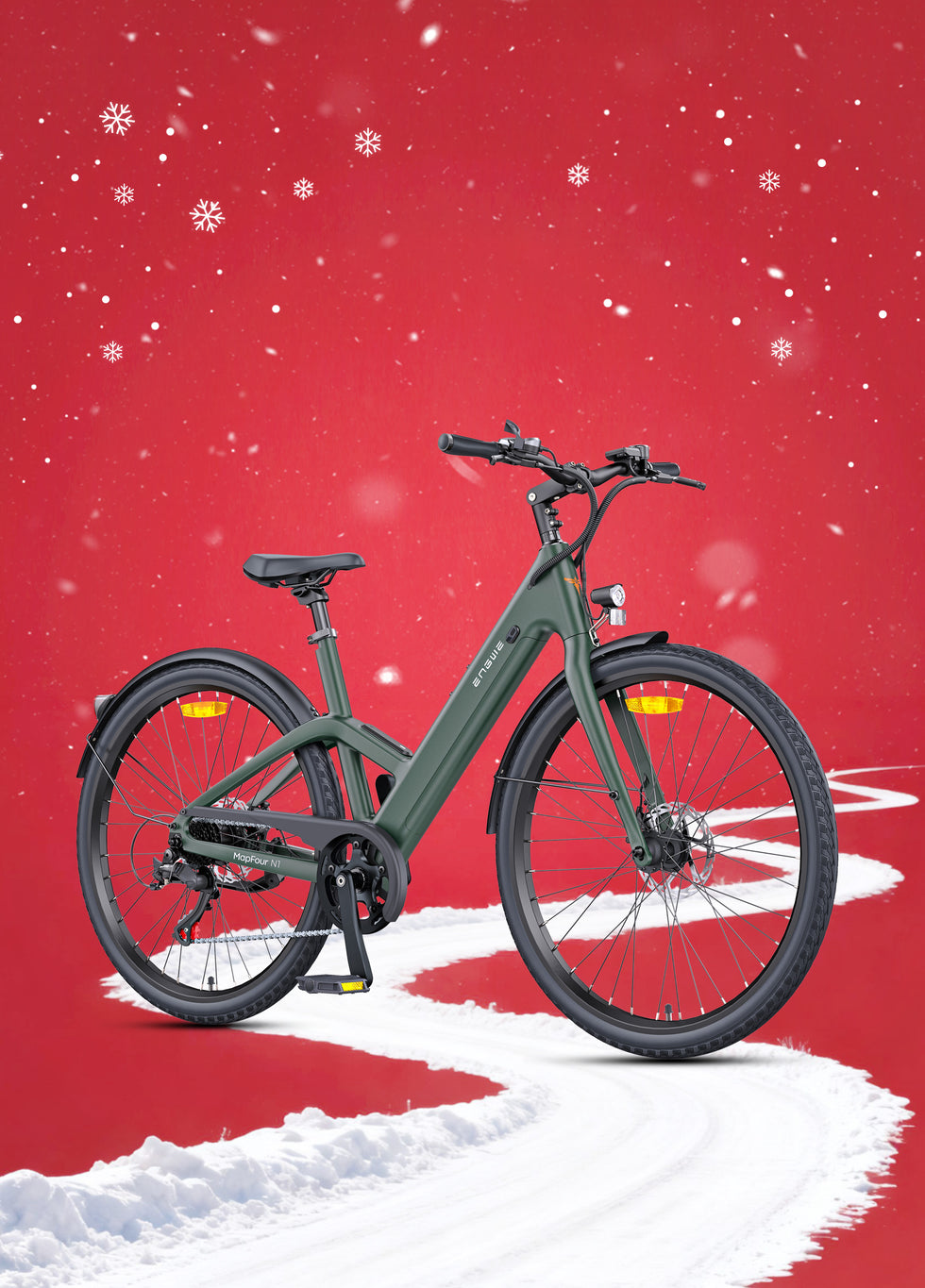A life without traffic, parking issues, and affordable transport. Imagine sailing through traffic with your kids or groceries in tow, confident they can ride comfortably and safely. It may not be the vision of tomorrow that so many movies have given us, but in fact, THAT is what a cargo bike can bring to our lives. Agile cargo bikes are sprouting up everywhere, quickly changing the way we think about cities and suburbs and emerging as a competitive choice for lots of your daily trips. If the e-cargo bike has piqued your interest and you're wondering how it could make your life less complicated, this guide will cover all of the basics to get you started; using an e-cargo bike doesn't have to be intimidating.
What is an E-Cargo Bike? The Future of Urban Mobility
In essence, an electric cargo bike, or e-cargo bike, is a bicycle made to haul either heavy and/or large loads. The cargo bike differs from a typical bicycle by its beefed-up frame, often elongated for stability during turns, and ample cargo capacity in the front or rear.
The e-cargo bike is the game-changer here. The latter marking a change for the integration of an electric assist system. It's not really a moped; it's still having you pedal the whole time — the system just takes your effort and multiplies it by folds of power. Examples of this are usually limited to three main parts:
The Motor
Assists with the heavy lifting so you can haul masses, traffic uphill, and get moving without delay.
The Battery
Keeps the dominoes that fall over and start the supply for the motor. This makes it a lot better for range and seeming reliability, as you get with modern lithium-ion batteries.
The Controller & Sensor
This is the grey matter of the setup. The sensor on the bike (either a cadence sensor or a torque sensor) senses that you are pressing down on the pedal and it sends the signal for how much power to output from the motor to the controller; it is as seamless as any system could be, without having to adjust your throttle or turn anything in between.
The regular electric bike is ideal for commuting, but the electric cargo bike is truly a practical bicycle. It is built stronger, with a greater payload and ultimate capability to safely carry anything other than the rider.
Types of E-Cargo Bikes
E-cargo bikes are available to provide different types of benefits, some being better than others. The key to finding the perfect bike for you is understanding these types.
Longtail
A longtail e-cargo bike is exactly what it sounds like – this type of cargo e-bike has a longer wheelbase, with a stretched rear frame that acts as one big, unified rack. Another classic design, it might be one of the busiest. With the longer platform, it can be outfitted with different accessories including massive pannier bags or a long padded seat for one or two child passengers, and even platforms for you to strap down boxes. They take very little time to get used to because they ride like a normal bike, just an extra-long one. Great for families, and those weekly shopping trips.
Front-Loader (or Bakfiets)
The Bakfiets (box bike) is the quintessential European-style cargo bike. A big cargo box/bed/platform is positioned close to the ground between the rider and the front wheel. It offers amazing stability and its largest cargo capacity allows it to easily carry multiple young children, big pets, or a substantial amount of your business stock. The steering is routed via a linkage rod to the front wheel, something that feels weird initially but soon becomes second nature. The bikes are rear-wheel drive and can be had in either a two-wheeler or three-wheeler (tricycle) configuration, with the latter also providing maximum stability at low speeds.
Mid-tail
A mid-tail cargo bike is a version of the longtail that is much smaller. It provides more cargo space per bike than a regular bicycle, but does so in a shorter, more maneuverable format than the average longtail. That means it's easier to squeeze into tight spaces, and a driver will appreciate being able to store it in their garage or shed. Although it may not move quite as much as a longtail or front-loader, it's an excellent middle ground for folks who want some more utility out of their bike but don't want to ramp all the way up to a cargo bike.

A Buying Guide to Help You Choose the Best E-Cargo Bike
Buying an e-cargo bike is a big investment, so it's worth doing some research. Think about what you want it for and then look at the main aspects to determine your perfect match.
Define Your Primary Use
So, ask yourself: why do you want an e-cargo bike in the first place?
Family transport – If you have kids to get around, it's all about safety. Try to have the front-loaders (like Bakfiets) with high-sided boxes plus seatbelts or longtails with sturdy guardrails and additional seating accessories. A low step-through frame is ideal for ease of getting on and off when juggling kids.
Commercial Delivery — You want the most reliability and load space. Look to your regular load size and weight as an indicator. A front-loader is tailored for those bulk runs where every trip is a massive load, or perhaps a longtail that allows you to drop off some boxes in one location while delivering other packages elsewhere.
General-purpose: If the majority of your cycling is carrying weekly groceries, sports gear, or a pet dog, longtail or mid-tail bikes find a balance between the capacity to handle an additional load and also managing them easily and competently thanks to an extended wheelbase.
Motor Matters: Mid-Drive vs Hub Motor
Your battery is important, but if you liken your electric bike to a motorbike, then its motor is fundamentally its heart. There are two main types:
Hub Motor: Inside the hub of the front or (more often) rear wheel. They tend to be simpler, more reliable, and often less expensive as well. The rear hub motor can deliver a smooth “being pushed from the back” experience and is more than enough for most metro riding or some light hill climbing, even with cargo.
Mid-Drive Motor: Located at the bottom bracket of the frame, where the crankset is. The electrical power goes straight to the wheel via the chain. The combination results in a very natural, balanced feel when riding and is extremely efficient, especially on steep hills. It is also often mated to advanced torque sensors that can measure your input from the pedals for absolutely seamless power delivery.
Battery Life & Range: What To Expect, How Far You Can Go
The heaviest bike of them all: a bike without charge. Range = Battery Capacity (Wh). A higher Wh number equals greater range. Except when you change the level of electric assist, or load it all up with heavy stuff, or go up a hill, or have low tire pressure... If you plan to ride a lot and even use it as your daily transportation, consider models with a dual-battery option that can nearly double your range.
Carrying Capacity & Frame
Also, every cargo bike has a defined maximum payload it can carry as per its manufacturer. This is the maximum weight (rider + cargo) that the bike can carry safely. Always respect this limit. For frames, consider 6061 Aluminum Alloy that is both durable and light. The design of a low step-through frame is a real boon as it makes it easy to load and unload even with the bike fully packed.
Safety and Components
When you have precious cargo in the back, all stopping operations require a more direct intervention.
Hydraulic disc brakes are the best, but not necessarily standard on all e-cargo bikes. Especially when loaded, these are key for managing weight because they offer dependable, hard braking in all weather and require very little hand effort. Opt for the big 180mm rotors for another increment of pedal feel and heat dissipation.
Tires: Wider the better (everyday tires are likely to be about 3.0in as opposed to regular 'slick' road bike tires). Puncture-proof or puncture-resistant tires are a massive bonus, reducing the chances of you being stuck on a delivery or school run.
Lights & Accessories: To see and be seen is everything. You'll need integrated front and back lights. These include key features such as rear turn signal lights, all of which play a key role in increasing your safety in traffic.
Top 5 E-Cargo Bike Brands to Consider by 2025
While there are many market-leading options, only a handful of brands consistently rise to the top for their innovation, quality, and user-centered design.
Engwe
Engwe, leading the charge in power, range, and bang for your buck, is quickly establishing themselves as a top name for those seeking extra out of their electric cargo bike. The star of the show is their ENGWE LE20 Super Range Step-Through Cargo e-bike, an exemplar of pragmatic design and sheer brute force. It is based around a 250W brushless rear hub motor with a peak torque rating of 75 Nm which makes mincemeat out of heavy payloads and hill climbs alike. What really sets it apart is its amazing range; the single battery version will do up to 180 km, or the optional dual-battery set-up that allows you to stretch up to an unprecedented 350 km, giving a new meaning and definition to “range anxiety“. All the benefits come without any sacrifice in ride quality, with an advanced torque sensor that delivers a smooth, natural, and efficient power assist to save every last bit of battery. A strong 6061 Aluminium Alloy step-through frame allows for an incredible total payload of up to 200 kg (440.9 lbs) and is accessibility-focused. Safety and comfort are also optimized with mega 180mm hydraulic disc brakes, front suspension to absorb shocks from the trails, and a burly set of wide 20x3.0” puncture-proof tires. Equipped with a light package including rear turn indicators, the LE20 is perfect for your next journey - whether by day or by night. Possibly one of the most flexible platforms around - equally suited to being set up for family transport, grocery getting, or carrying business gear - and with an optional ENGWE 8A Flash Charge accessory that can reduce charging time by two-thirds for those who can't afford downtime.

Tern
Tern is a Taiwanese brand known for its excellent engineering in compact, foldable bicycles. Their GSD (Get Stuff Done) longtail model is the top seller in this segment, and it also offers exceptional stiffness with a low center of gravity thanks to the sturdy frame plus a complete accessory ecosystem. Tern bikes use top-level components and offer a high-quality build, engineered to provide a polished, car-like experience for urban families.
Riese & Müller
If there was a "Mercedes of e-bikes," it would be Germany's Riese & Müller. Hailing from decades of high-end engineering, they offer ultimate comfort and cutting-edge technology. Their cargo bikes, often with a strong Bosch mid-drive motor and options like full suspension and dual-battery systems on top of that, make them blazing performers capable of handling everything you can throw at it. Both their Load (front-loader) and Multicharger (longtail) models are clearly best in class within their category of premium cargo bikes.
Yuba
Yuba is a Californian pioneer in cargo bikes and was one of them long before they became mainstream. Putting social promises into practice, they have a range of family-specific bikes on offer, from the agile longtail Spicy Curry with its low-rider rear rack, to the voluminous front-loader Supercargo. Their brand brings out a sense of fun and community as well as the benefits of living life without a car with their brightly colored bikes designed for everyone in mind.
Rad Power Bikes
Rad Power Bikes is largely responsible for the popularity e-bikes now enjoy in North America (and to a lesser extent, Europe) by keeping things simple and price-conscious with its direct-to-consumer model. One of the best-selling models in the world is their RadWagon longtail cargo bike. This made it a good option for those on a more limited budget looking to enter into the world of e-cargo bikes, as you could fairly trust that it would deliver all the features you needed from an electric utility cargo offering without causing headaches over GM-level quality.

Top 5 Questions on E-Cargo Bike Answered
And even once a style has been decided upon, there is usually still the pertinent question of what to do practically. We have the top five answers to inquiries from wannabe riders.
Q1: Can I really get rid of my car for an e-cargo bike?
The short answer is a plain yes for many short-haul urban and suburban journeys. Be it the school run, weekly shop, visits to your local park, or any business delivery within a short distance. An e-cargo bike is excellent for these tasks. And the benefits: zero fuel costs, no parking fees or fines, no road tax, automatic exercise, and a huge reduction in carbon emissions. This is not a true car replacement vehicle that you will use for long highway drives or in a snowstorm, but for the majority of everyday driving situations, it is an easier, more enjoyable, and much less hassling solution.
Q2: Is riding an e-cargo bike difficult or safe?
They're not hard; they're just different. There is a learning curve in regards to the increased length and weight. Get some practice in an empty car park, learning the turning circle and feel. Surprisingly, models with a low center of gravity are relatively stable on the move. The electric assist is one of the most important safety features when using a cargo bike, allowing you to start forward with a heavy load and just focus on balancing if there are other road users around you. Braking is the paramount element in safety, which is why really good hydraulic disc brakes are so important for firmness and control when stopping.
Q3: What type of Electric Cargo Bike can I legally ride in the UK?
The UK considers e-bikes as if they are traditional bicycles provided they meet the "Electrically Assisted Pedal Cycles" (EAPC) criteria, which means no license, no registration, and no tax. The key EAPC rules are: a 250W maximum continuous rated motor output, and power assistance cuts out at 15.5 mph (25km/h). You must be at least 14 to ride an EAPC. Just like any other bike on the road, all normal rules of the road apply.
Q4: What maintenance do I need to do for my e-cargo bike?
Maintenance is very much like a regular bike, but with a few things to keep an eye on as the weight and complexity have increased.
Tire Pressure: Check it weekly. Correct tire pressure is important for safety, performance, and load-carrying.
Brakes: Check brake pads for wear on a regular basis. Because of those bigger forces at play, pads will likely wear out a bit faster than on your standard bike.
Chain: Clean and oil it. The motor puts extra stress on the drivetrain.
Battery: Follow the manufacturer's instructions for charging the battery. Do not leave the battery fully empty for long periods of time.
Maintenance Servicing: In addition to it, make sure the e-bike is serviced at least once a year by an expert electric bike mechanic who can give a good look at the motor and electrical system components.
Q5: That sounds like an awful lot of bike to just leave lying around unguarded, how do I protect my new bike?
This is a critical concern. Multiple layers of security are the most effective.
Strong Locks: Ideally, 2 "Sold Secure Gold" or "Diamond" rated locks. A combination of two different types (say a hefty D-lock together with a thick chain lock) is also an excellent visual deterrent as a thief may be tooled up for one but not both.
Locking Your Bike: Always lock the frame (not just the wheel) to a secure, immovable object such as an authorized bike rack.
Park Smart: When not in use, keep that souped-up beauty stored safely inside a locked garage or shed if possible. Select well-lit, high-traffic areas when out of the home.
Tech: Try installing your bike with an easily hidden GPS tracker. There are a handful of companies providing similar services to help get your bike back after it's been stolen.
Insurance: This is highly recommended. Many home contents insurances do not cover e-bikes and if they do, it is generally only when the bike was at home. Find a pro insurance for theft and damage to e-bikes.
The Better Way to Move, The New Way to Live
The electric cargo bike trend is well beyond a fad. It is a whole change in how we could address our daily commutation issue. Bicycling allows us the freedom to carry what we need, go where we wish, while doing it in a manner that is healthier for you and the planet. By ditching short car journeys, you are not only saving money but also buying time back, reducing stress, and seeing a side to your local landscape that was previously hidden from view. Whether you are a parent, a small business owner, or just anyone who is trying to find a more practical and enjoyable way to get around than by car, we now live in the era of the e-cargo bike revolution–and it is your turn!
